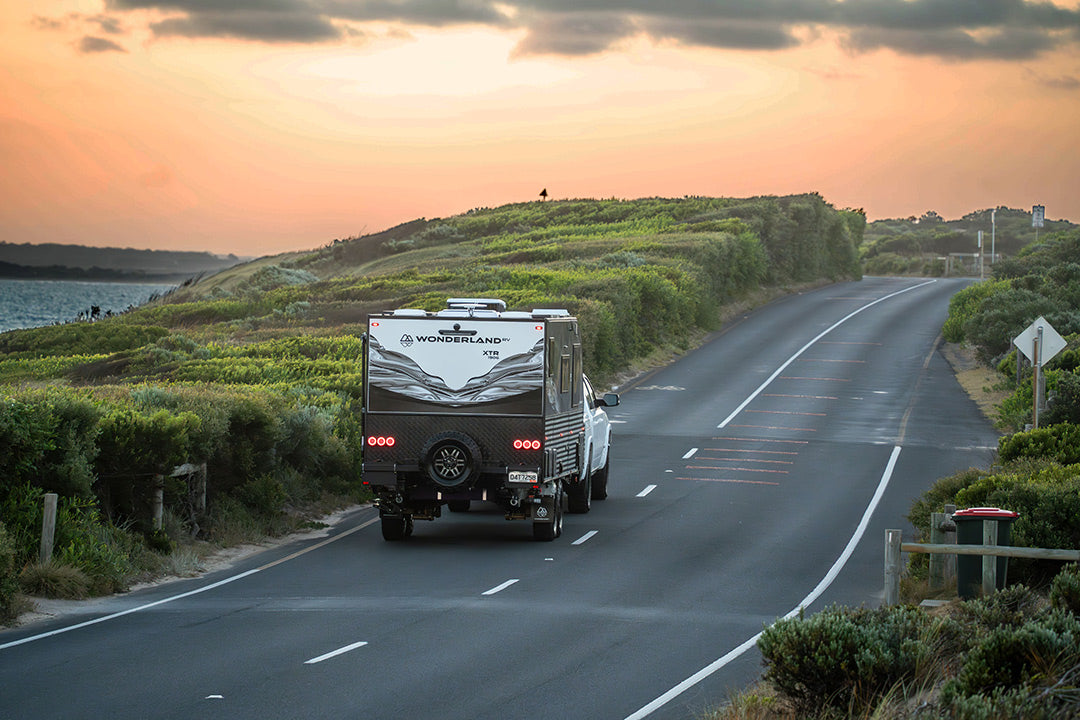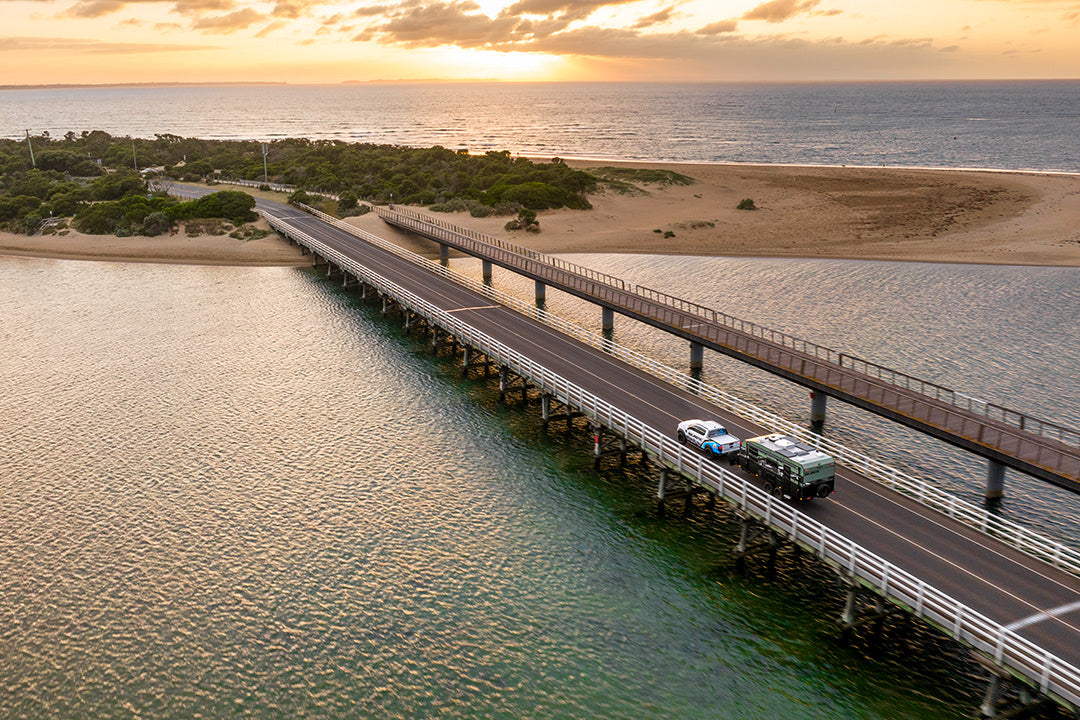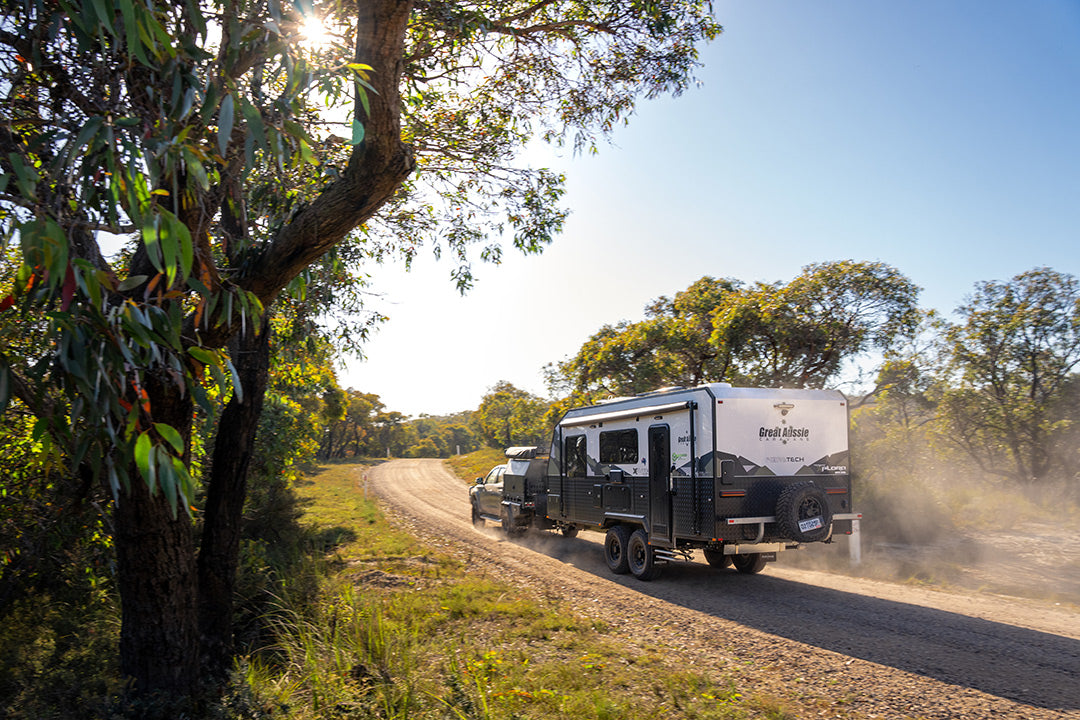TOW TEST: TOYOTA LANDCRUISER 200 SERIES

FEW TOW VEHICLES get the attention of caravanners as much as the Toyota LandCruiser 200 Series. It’s easy to see why. It has a heavy, wide and long footprint on the road promising rock-solid towing stability, a torque-monster V8 diesel engine, a lush ride and comfortable, roomy interior, backed up by service agents spread far and wide. To many it is a compelling – if expensive – package.
ATTRIBUTES
The entry-level GX was introduced in November 2011, in the last months of the pre-update 200 model-run, so it is not, strictly speaking, a new model. In its updated guise, the GX, like all LandCruisers, has revised exterior styling including new headlights, revised bumpers and grille, new taillights and a revised audio system. It also now has centre wheel caps fitted on the 17in steel wheels.
Toyota has improved its offroad cruise control system, CRAWL, for the updated 200 Series. The low-speed settings (under 25km/h) have increased from three to five levels. CRAWL maintains a uniform vehicle speed with minimal wheelspin or lock-up by controlling engine output and brake hydraulic pressure. The system now includes Offroad Turn Assist for easier cornering on sharp bends by automatically applying the brake on one wheel only.
Computer improvements also see the introduction of Multi-Terrain ABS that adapts to driving conditions (including sand, mud and gravel) by detecting engine output, acceleration and wheel speed.
Six airbags, vehicle stability control, active traction control and hill-start assist cover off the safety front.
Inside, the updated GX gains an economy light in the instrument cluster, which illuminates to let the driver know that the vehicle is being driven for the best fuel-efficiency.
The GX has vinyl floors, twin barn tailgate doors, 17in steel wheels, a snorkel, 93L main and 45L auxiliary fuel tanks, and under-body protection plates. Manual air-conditioning, power windows with driver’s auto up/down and power-operated exterior mirrors are also fitted.
The GX’s colour palette is restricted to glacier white, silver pearl, graphite and ebony with grey fabric interior. The price is $77,990, plus on-road costs.
As you climb up into the LandCruiser, the first thing you will notice is an absence of side steps, standard across the rest of the 200 Series range. So without the side steps – unless you’re particularly tall – you’ll appreciate the grab handles in the pillars. Have a look around the cabin and it is all standard 200 Series fare – until you look at the floor, that is. The GX’s vinyl flooring is a concession to the mostly fleet buyers, and while at first acquaintance it seems like a cheap and nasty touch for a $77k vehicle, when you easily sweep out the sand after a day on the beach, vinyl will suddenly seem like the new black.
The 200 Series is a five-seater only (the rest of the LandCruiser range has eight seats as standard) and it lacks some equipment that recreational buyers will miss. For example, the only 12V socket is the cigarette lighter on the centre console.
The front seats are comfortable with ample support and room for most bodies. The driver is presented with clear, logical controls and instruments, and nice, large side mirrors. Vision is pretty good out of the LandCruiser, but around town in the inner ’burbs it feels like the big truck that it is. Reverse parking needs a bit of guesswork – no parking sensors here.
ENGINE AND TRANSMISSION
Only one powertrain is offered on the GX: the 4.5L V8 twin-turbo diesel engine, six-speed automatic transmission, full-time 4WD with Torsen limited-slip centre differential and two-speed transfer case. This is the same powertrain that has been offered on the LandCruiser 200 since 2007, so no surprises there.
The 4.5L V8 is not particularly quiet. It sounds and feels like a big diesel engine, especially with the induction noise from the snorkel under load, but it seems relatively smooth. And while there is an initial turbo lag hesitation, it is minimal. The V8 begins to belt out its thick stream of torque quickly and the automatic transmission slides though its six ratios with an ample amount of fluidity. Once rolling, response is very good; there are few turbodiesel SUV wagons that are as easy to point and shoot as this one.
SUSPENSION
The LandCruiser has a pretty good ride for a standard 4WD and while it isn’t by any means the sharpest tool in the shed when it comes to cornering precision, it isn’t bad at all for point-to-point touring, especially as the road gets rough – it seems to lap up bumpy backroads.
The live rear axle does show its shortcomings for ride and stability over big sharp bumps though – it’ll have the big ’Cruiser dancing a sideways step. It’s nothing too dramatic if you’re not being silly, but it’s a reminder that independent rear suspension is better for ride and stability when on fast touring roads.
When the roads turn to tracks, the LandCruiser comes into its own. It is highly competent offroad, with excellent offroad angles, wheel travel and articulation, very effective traction control and low-range gearing. The only downside is its size – on a tight track the ’Cruiser feels big.
ECONOMY
Toyota claims that the GX achieves 10.3L/100km on average. On test we achieved an 11.9L/100km figure running solo, and 17.7L/100km while towing a 1900kg tandem-axle caravan.
TOWING
Much like the rest of the LandCruiser range, the GX
is a very good tow tug. It took on the load of a medium-weight caravan sitting in behind as if it wasn’t there. The van we hitched up had a weight of just less than 2000kg and a towball download of 130kg.
The LandCruiser felt very stable, with little in the way of yawing or pitching. The suspension was level front and rear, and we did not use any load-levelling devices. Performance when towing was very good, and while the gearshifts appeared to lose some of their smoothness when towing, the engine was very responsive and never felt as though it lacked power. Engine braking was very good down the steep, slow inclines on which we tested the vehicle.
THE BOTTOM LINE
There is no doubt that the LandCruiser remains one of the best tow vehicles available in Australia. It is a com-fortable highway cruiser and an able offroad warrior. As an added bonus, with the GX, the 200 Series has become just that bit more affordable. And that raises the only major sticking point: at around $80,000 on the road, the GX may be the cheapest LandCruiser 200 but it is not by any means a bargain tow tug.
Thanks to Parravans, 38-40 Mileham Street, Windsor, NSW 2756, (02) 4577 5577, for the loan of the caravan for this test.
SPECIFICATIONS
Engine Twin turbo-charged V8 diesel
Max power 195kW at 3400rpm
Max torque 650Nm at 1600-2600rpm
Transmission Six-speed automatic
Length 4950mm
Width 1970mm
Height 1905mm
Wheelbase 2850mm
Ground clearance 225mm
Kerb Mass 2675kg
Gross Vehicle Mass 3300kg
Gross Combined Mass 6800kg
Fuel tank capacity 138L
Towing capacity 3500kg
TBM maximum 350kg
Price $77,990 (plus on-road costs)
More information www.toyota.com.au
WORDS AND PICS Philip Lord
Source: Caravan World Jun 2012
More tow test articles






